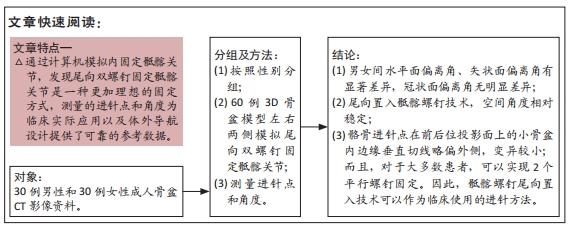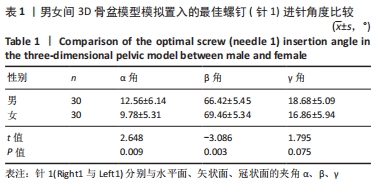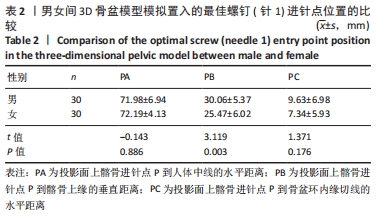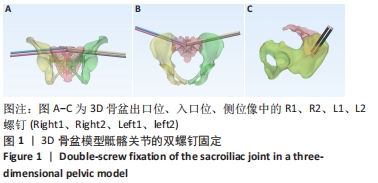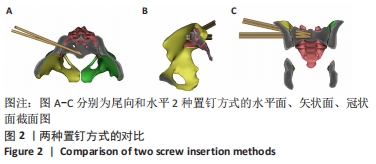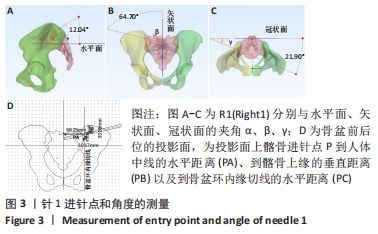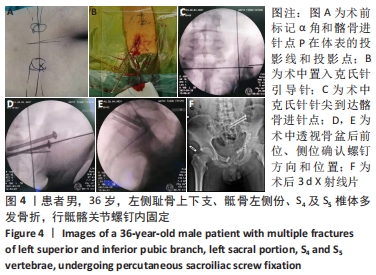[1] IORIO JA, JAKOI AM, REHMAN S. Percutaneous Sacroiliac Screw Fixation of the Posterior Pelvic Ring. Orthop Clin North Am. 2015;46(4):511-521.
[2] QOREISHI M, SEYYED HOSSEINZADEH HR, SAFDARI F. Clinical Results of Percutaneous Fixation of Pelvic and Acetabular Fractures: A Minimally Invasive Internal Fixation Technique. Arch Bone Jt Surg. 2019;7(3):284-290.
[3] KRISHNAN BH, SHARMA Y, MAGDUM G. A retrospective analysis of percutaneous SI joint fixation in unstable pelvic fractures: Our experience in armed forces. Med J Armed Forces India. 2016;72(3): 231-235.
[4] CHEN J, FANG Y, WALTER MC, et al. Anterior subcutaneous internal fixation combined with posterior percutaneous iliosacral screw for treatment of unstable pelvic fractures. Zhongguo Xiu Fu Chong Jian Wai Ke Za Zhi. 2020;34(1):21-26.
[5] BOUSBAA H, OUAHIDI M, LOUASTE J, et al. Percutaneous iliosacral screw fixation in unstable pelvic fractures. Pan Afr Med J. 2017;27:244.
[6] YU T, CHENG XL, QU Y, et al. Computer navigation-assisted minimally invasive percutaneous screw placement for pelvic fractures. World J Clin Cases. 2020;8(12):2464-2472.
[7] 步国强,毛仲轩.Mimics软件模拟置钉在腰椎关节突重度退变椎弓根螺钉内固定中的应用[J].中国组织工程研究,2015,19(17):2745-2751.
[8] 陈志平,左朝江,邵庆中,等.Mimics软件三维建模确定椎弓根钉最佳置入点的临床应用[J].中国骨与关节损伤杂志,2017,32(3): 279-280.
[9] 刘俊,余黎,余国荣.经皮骶髂关节螺钉治疗中老年骨盆骨折脱位的有效性及安全性[J].中国老年学杂志,2018,38(20):4943-4945.
[10] 王小阵,汪国栋,孟乘飞,等. ISO-C3D导航下经皮骶髂关节螺钉内固定治疗骨盆后环损伤的临床研究[J].中国修复重建外科杂志, 2016,30(11):1338-1343.
[11] 初向全,董永伟,徐波,等.国人骶髂贯穿螺钉置钉通道的数字解剖学研究[J].中华创伤杂志,2018,34(1):51-56.
[12] 王晖,王磊,于媛,等.数字解剖学在骶髂关节损伤手术治疗中的应用[J].中国骨与关节损伤杂志,2014,29(6):524-527.
[13] 卢超,宋迎春,高波华,等.经S1骶髂螺钉参数测定及经皮螺钉导向器可行性的数字模型[J].南方医科大学学报,2014,34(6):869-874.
[14] 谭培勇,项舟,宋彬,等.数字化仿真技术确定最佳骶髂螺钉通道的研究[J].中国脊柱脊髓杂志,2012,22(7):634-640.
[15] 汪海清,尹维刚,史增元,等.拉力螺钉内固定骶髂关节的影像学与三维重建研究[J].中国临床解剖学杂志,2015,33(2):144-147,154.
[16] 洪华兴.骶髂关节螺钉固定的钉道参数应用解剖学研究[D].杭州:浙江大学,2004.
[17] 夏洪刚.空心钉固定成人骶髂关节的钉道参数应用解剖学研究[D].大连:大连医科大学,2011.
[18] TRIKHA V, GABA S, KUMAR A, et al. Safe corridor for iliosacral and trans-sacral screw placement in Indian population: A preliminary CT based anatomical study. J Clin Orthop Trauma. 2019;10(2):427-431.
[19] GOETZEN M, ORTNER K, LINDTNER RA, et al. A simple approach for the preoperative assessment of sacral morphology for percutaneous SI screw fixation. Arch Orthop Trauma Surg. 2016;136(9):1251-1257.
[20] WAGNER D, KAMER L, SAWAGUCHI T, et al. Morphometry of the sacrum and its implication on trans-sacral corridors using a computed tomography data-based three-dimensional statistical model. Spine J. 2017;17(8):1141-1147.
[21] GRAS F, GOTTSCHLING H, SCHRÖDER M, et al. Transsacral Osseous Corridor Anatomy Is More Amenable To Screw Insertion In Males: A Biomorphometric Analysis of 280 Pelves. Clin Orthop Relat Res. 2016; 474(10):2304-2311.
[22] DURUSOY S, PAKSOY AE, KORKMAZ M, et al. Is pelvic mapping applicable in iliosacral screw fixation to determine screw entry point and screw trajectory? Eklem Hastalik Cerrahisi. 2019;30(3):252-258.
[23] 钟远鸣,万通,钟锡锋,等.3D打印模型辅助置钉技术与传统置钉技术治疗脊柱畸形有效与安全性的Meta分析[J].中国组织工程研究,2021,25(30):4900-4906.
[24] 周武,刘毅,刘国辉,等.3D打印导板技术辅助与透视辅助骶髂关节置钉的对比研究[J].中华创伤杂志,2018,34(6):484-489.
[25] 刘毅,刘国辉,夏天,等. 3D打印导板技术在骶髂关节螺钉置入中的应用[J].中华骨科杂志,2018,38(2):86-92.
[26] CHEN X, ZHENG F, ZHANG G, et al. An experimental study on the safe placement of sacroiliac screws using a 3D printing navigation module. Ann Transl Med. 2020;8(22):1512.
[27] 聂涛,曾昭勋,黄胜,等.TiRobot机器人辅助治疗骶髂关节骨折脱位[J].中国矫形外科志,2020,28(20):1897-1900.
[28] LONG T, LI KN, GAO JH, et al. Comparative Study of Percutaneous Sacroiliac Screw with or without TiRobot Assistance for Treating Pelvic Posterior Ring Fractures. Orthop Surg. 2019;11(3):386-396.
[29] 龙涛,彭超,何智勇,等.机器人辅助下经皮骶髂螺钉固定手术的优势及安全性研究[J].中华创伤骨科杂志,2019,21(1):10-15.
[30] LIU HS, DUAN SJ, XIN FZ, et al. Robot-assisted Minimally-invasive Internal Fixation of Pelvic Ring Injuries: A Single-center Experience. Orthop Surg. 2019;11(1):42-51.
[31] 沈明荃,杨铁毅,王治.经椎弓根定位骶髂关节导向器的可行性验证[J].中国组织工程研究,2018,22(27):4311-4315.
[32] 黄俊锋,刘黎军,韩云,等.机器人导航定位系统辅助经皮骶髂螺钉治疗骨盆后环不稳定型损伤的临床研究[J].中华骨与关节外科杂志,2020,13(2):148-153.
|
